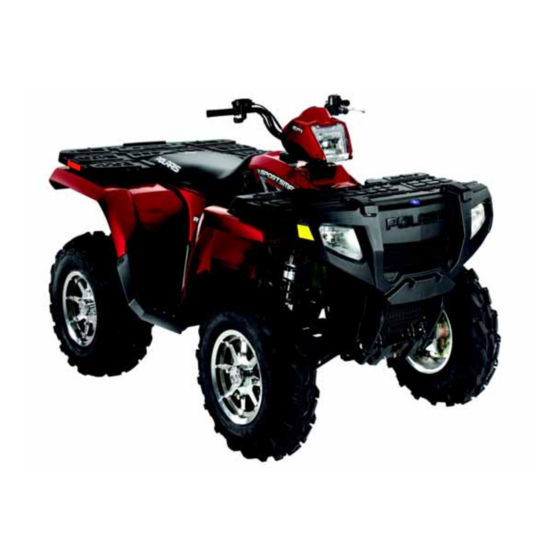
Table of Contents
Advertisement
Quick Links
2008 SPORTSMAN X2 700 /800 EFI /800 TOURING
SERVICE MANUAL
FOREWORD
This service manual is designed primarily for use by certified Polaris Master Service Dealer technicians in a properly
equipped shop and should be kept available for reference. All references to left and right side of the vehicle are from
the operator's perspective when seated in a normal riding position.
Some procedures outlined in this manual require a sound knowledge of mechanical theory, tool use, and shop
procedures in order to perform the work safely and correctly. Technicians should read the text and be familiar with service
procedures before starting the work. Certain procedures require the use of special tools. Use only the proper tools as
specified.
Comments or suggestions about this manual may be directed to: Service Publications Dept. @ Polaris Sales Inc. 2100
Hwy 55 Medina Minnesota 55340.
2008 Sportsman X2 700 / 800 EFI / 800 Touring Service Manual PN 9921323
© Copyright 2007 Polaris Sales Inc. All information contained within this publication is based on the latest product information at the time of publication. Due to constant
improvements in the design and quality of production components, some minor discrepancies may result between the actual vehicle and the information presented in this
publication. Depictions and/or procedures in this publication are intended for reference use only. No liability can be accepted for omissions or inaccuracies. Any reprinting
or reuse of the depictions and/or procedures contained within, whether whole or in part, is expressly prohibited. Printed in U.S.A.
Advertisement
Chapters
Table of Contents
Troubleshooting















Need help?
Do you have a question about the 2008 sportsman 800efi and is the answer not in the manual?
Questions and answers
How to completely drain fuel system
To completely drain the fuel system on a Polaris 2008 Sportsman 800 EFI:
1. Treat the fuel system with Polaris Carbon Clean. If not using a fuel system additive, the fuel tank and fuel lines must be completely drained of gasoline.
2. Ensure the engine is cool before draining, as draining when hot can cause severe burns.
3. Relieve the fuel system pressure before starting any service, as the EFI components are under high pressure.
4. Do not overfill the tank and always leave room for fuel expansion.
5. Follow safety precautions: avoid open flames, sparks, or smoking near the fuel area.
This ensures the fuel system is safely and completely drained.
This answer is automatically generated